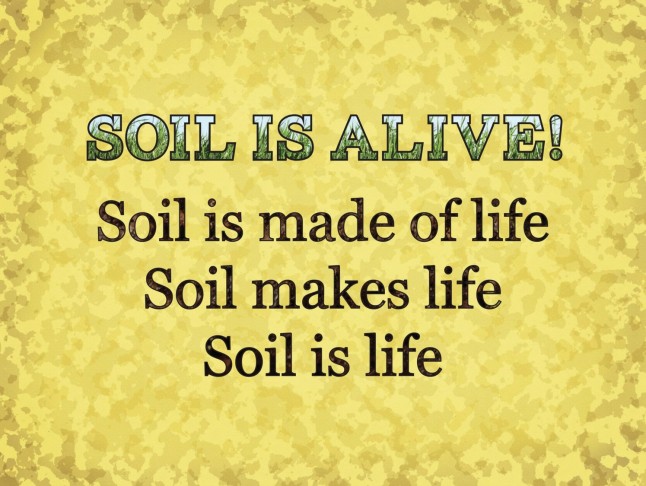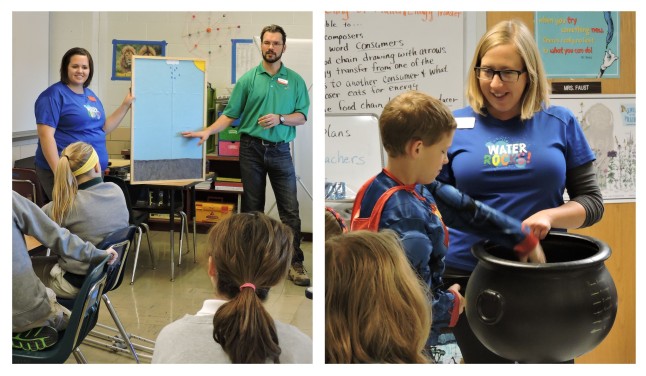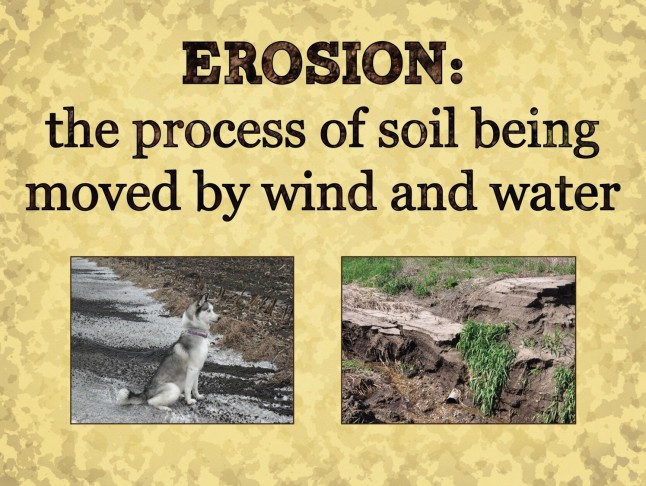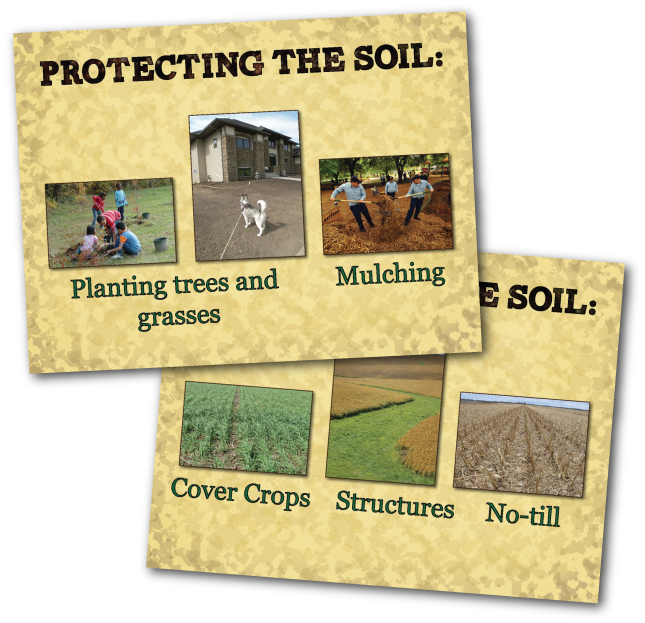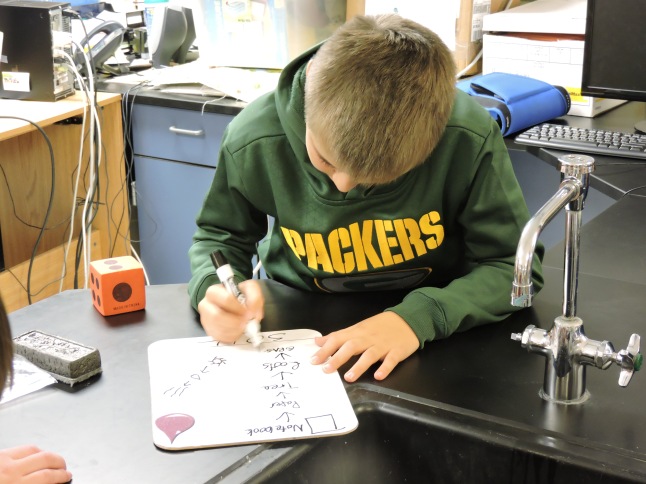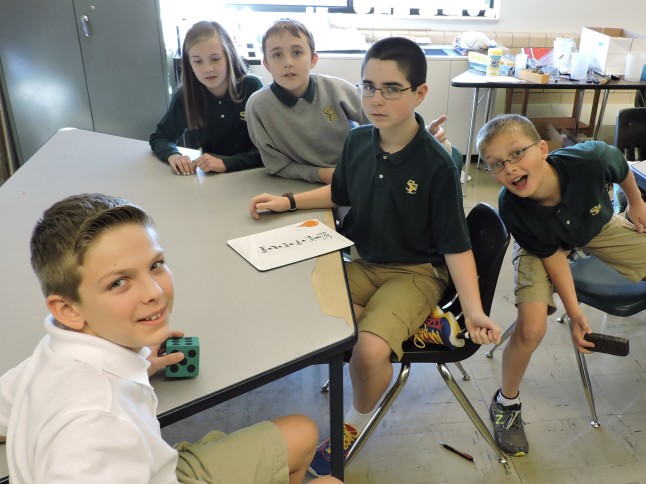As the spring rolls on and the temperatures continue to rise, so does the frequency of our school visits with Water Rocks!. Earlier in the year, I showcased several of the interactive games and lessons we utilize to teach young people about watersheds (see the blog post Making a splash with youth water(shed) education). While water and watersheds are central to everything we do, they’re not the only topics we cover in the classroom.
We actually offer 6 separate classroom modules on different conservation/natural resources topics (read more about them on our Classroom Visits page), each with its own interactive games, lessons, and activities. Today I’d like to give you a glimpse into our Dig Into Soil module!
What’s the difference between soil and dirt?
First things first, SOIL IS ALIVE! We help students see the difference between soil – a dynamic, living ecosystem — and dirt, which gets tracked in the house and makes a mess.
How is soil formed?
We have two different activities we use in teaching students about soil formation …
With the felt board, on the left, students help build soil from the ground up, and we discuss how there are many different layers – much like building a layer cake. It’s great to see students’ reactions to the “magic” of an old-school felt board and how it all sticks together… something that is unique and often unfamiliar to students growing up in the generation of tablets and smartphones!
The other soil formation activity involves our soil cauldron, on the right, and students help to add the different ingredients that create soil – rocks (parent material), water, sunlight, organic matter, nutrients, worms, bugs, and microorganisms.
With both of these activities, TIME is a key ingredient that cannot be forgotten – 1” of soil takes 500-1000 years to form! One of my favorite student reactions of all time was at Pekin several years ago – one particular student was blown away by this fact and he blurted out, “Man, Earth, you’re really slow!”
Soil is Endangered
Yes, our soil is endangered … it is being lost, via erosion, more quickly that new soil can be formed. On average, across Iowa, we lose 1″ of soil in 20 years … compare that to the amount of time it takes for a new inch of soil to form!
What can we do to protect our soil?
We challenge students to identify ways that we can protect the soil we have, covering both agricultural and urban options. As we tell them, any time we can keep the soil covered with plant material – whether it’s living plants or dead – that’s a great strategy for keeping soil in place.
Why does soil really matter?
Everything comes from soil! Students are broken into teams to compete in the Six Degrees of Soil game. We reveal an object, and then students have 30-60 seconds (depending on age) to work with their team and, on their markerboard, document the steps that connect that item back to soil! We have a wide variety of objects to choose from – food items, clothing, school supplies, household goods, sporting equipment, and more… so no two games are ever the same!
After revealing their responses, a “thumbs up” from the Water Rocks! team means that team gets to roll their dice and advance their rain drop on the game board, infiltrating through the soil profile.
We also talk about decomposition, and how it all comes full circle. The final part of the game involves ranking five common objects in the order of how quickly they decompose out in the environment: disposable diaper, leaves/residue, orange peel, leather gloves, and plastic soda bottle. Students are shocked to learn that a plastic soda bottle takes 500 years to decompose – the same amount of time it takes to make 1” of soil.
One of the other ways we can tell that students are excited about the presentation is through the questions that they ask. Here is a sampling of the great questions we were asked by 5th graders at Lovejoy Elementary School in Des Moines earlier this week:
As you can see, we have lots of fun with each of our classroom visits. It’s high energy, interactive, and highly educational, as well!
Would you like to have the Iowa Learning Farms/Water Rocks! team and Conservation Station visit your county fair, farmers market, or other community event this summer? Put in your request here. Visits are available free of charge, and we do our best to share the love across the state!
Looking ahead to fall, we’re also currently accepting requests for school visits, outdoor classrooms, and community events happening during the months of September – November.

